Opportunities and Limitations in Medicinal and Aromatic Plants’ Markets and Research in Developing Countries: Lebanon as a Case Study

Authors:
Lebanon, a country on the eastern coast of the Mediterranean, has a rich fl oral diversity. Relative to its area, Lebanon has more wild plant species density than any European country. With a surface area of only 10452 square kilometer, more than 2600 species of wild plants can be found. The fl ora of Lebanon has been of interest to several botanists, most popular being Post (1932) and Mouterde (1966, 1970, 1983) who have published monumental works documenting the plants of Lebanon and neighboring countries. Following their steps, Tohme and Tohme (2007, 2013) have compiled the most recent comprehensive fl ora of the country. Their data indicated that out of the 2597 plants identifi ed, 109 are endemic to Lebanon, about 52% of Lebanese fl ora is not found in Europe and 1185 species are particularly known in the eastern Mediterranean region. This richness, added to a diversity of different cultural practices in the Lebanese social strata, has contributed to a variety of approaches across generations for utilization of Medicinal and Aromatic Plants (MAP) that is still, to a certain extent, in practice to-date. However, this richness of plant biodiversity and more particularly of MAP is at risk due to degradation of natural habitats as a result of uncontrolled growth of urbanization, habitat destruction, and overexploitation of the resources. This further contributes to the loss of the MAP genetic diversity (Noun 2007, MoA/UNEP/GEF 1996, UNDP 2013). In Lebanon, a country historically rich in MAP diversity and in indigenous MAP-associated knowledge, several attempts have been made to document this heritage (Ruwaiha 1981, Jabr 1988, Akil 1996, Baalbaki 2000, Kadamah 2000, Hayek 1996–2001, Ismail 2001). Unfortunately, most of these attempts have focused on compiling existing knowledge without any signifi cant effort to add to it since the golden age of the traditional medicine of Ibn Sina (1025), Daoud Al Antaki (1877) and others. Recently, at the national level, an exhaustive work on plants has been published by the Ministry of Agriculture (MOA), the United Nations Environmental Programme (UNEP) and Global Environmental Facility (GEF). In this milestone study (MOA/UNEP/GEF 1996), around 300 species were listed to have medicinal and aromatic properties. An update of their work combined with other more recent publications on the listing of MAP of Lebanon (Hayek 1996–2001, Abou Chaar et al. 2004, El Beyrouthy et al. 2008, Deeb et al. 2013) has led to a total of 385 MAP species distributed over 260 genera and 90 botanical families. These have been compiled and listed in Table 6.1; many of these plants are endemic to Lebanon and/or under threat due to their niche distribution while others are endemic to the Levant region. The main families rich in diversity of genera of MAP are Lamiaceae and Asteraceae with more than 40 MAP species each followed by Fabaceae and Apiaceae with more than 20 each.
